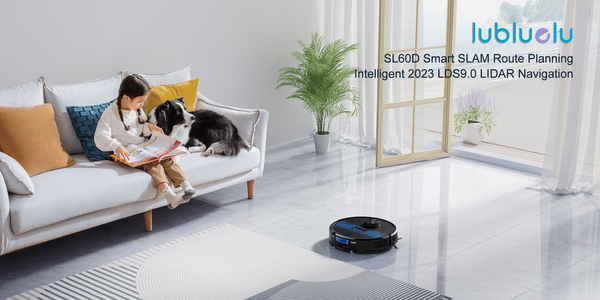The Robot Cleaner's Modern Evolution: Basic Automation to Advanced Intelligence

As we step into the world of automation, the robot cleaner has emerged as a significant milestone. This blog delves into the fascinating journey of the robot cleaner, tracing its development from its humble beginnings to the cutting-edge technology it represents today.
Early Concepts and Prototypes
The concept of an automated cleaning device dates back to the early 19th century, with the invention of vacuum cleaners and other mechanical cleaning aids. However, it wasn't until the late 20th century that the idea of a robot cleaner truly began to take shape.
The earliest prototypes of robot cleaners were simple and often resembled remote-controlled vacuum cleaners. These early models used basic sensors to navigate around obstacles and had limited autonomy. They relied on human intervention to some degree, whether it was to change batteries, empty dustbins, or guide them through the house.

The Arrival of the First Commercial Models
The mid-1990s marked a significant milestone in the history of robot cleaners. This was the era when the first commercial models hit the market, offering a glimpse into the future of home automation.
These early commercial models were still quite basic, but they represented a significant leap forward in terms of technology and functionality. They used infrared sensors to detect obstacles and avoid bumping into them. Some even had the ability to dock themselves back to their charging stations when the battery was low.
Advancements in Navigation and Mapping

The early 2000s saw a surge in innovation and advancements in robot cleaner technology. Manufacturers began to experiment with more advanced sensors and navigation systems, leading to a significant improvement in cleaning performance.
One of the most significant advancements was the introduction of mapping technology. This allowed robot cleaners to create a virtual map of the room they were cleaning, enabling them to methodically cover every inch without missing a spot. This technology revolutionized the way robot cleaners operated, making them more efficient and thorough.
The Era of Smartphones and Mobile Apps

The arrival of smartphones and mobile apps further transformed the robot cleaner industry. With the help of Wi-Fi connectivity, users could now control their robot cleaners remotely, schedule cleaning sessions, and even monitor their progress in real-time.
This added convenience was a major driver in the popularity of robot cleaners. People could now come home to a clean and tidy house, without having to lift a finger. The ability to schedule cleanings around their daily routines also made robot cleaners a convenient addition to busy lifestyles.
Integration of AI and Machine Learning

The 2020s have seen the emergence of even more advanced features in robot cleaner technology. The integration of AI and machine learning has opened up new possibilities, making robot cleaners more intelligent and adaptable.
Modern robot cleaners now come with sensors that can detect different floor types and adjust their cleaning accordingly. Some models even have the ability to mop floors, offering a comprehensive cleaning solution. And with the help of AI, these robot cleaners can learn and adapt to their environment, becoming more efficient over time.
Looking Ahead: The Future of Robot Cleaners
As we look ahead to the future, the possibilities for robot cleaner technology are endless. With ongoing research and development in AI, sensor technology, and battery life, we can expect to see even more advanced features in the coming years.
Robot cleaners may become even more autonomous, able to clean without any human intervention. They may integrate with other smart home devices, creating a fully automated cleaning system that works seamlessly with the rest of your home's technology.
Moreover, with the rise of environmental awareness, we may see robot cleaners that are more energy-efficient and sustainable. Manufacturers may also experiment with new materials and designs that make robot cleaners more aesthetically pleasing, blending seamlessly into our homes.
In conclusion, the development of the robot cleaner has been a remarkable journey. From basic automation to modern intelligence, this technology has come a long way in meeting our cleaning needs. As we look ahead to the future, it's exciting to imagine where this journey will take us next. With the help of AI, machine learning, and other innovative technologies, the robot cleaner is poised to become an even more indispensable part of our daily lives.
Leave a comment